Portion Distortion: Why Aren't There Set Portion Sizes for Baby-Led Weaning?
- The fact that there are no set of food portion size guidelines that have been set for babies, it is important to offer a variety of foods early and often
- Current feeding recommendations in the United States as well as a few other countries
- Ideas of how much a baby may eat on certain occasions or different phases and provide some tips about things parents can do to help their babies develop their eating skills
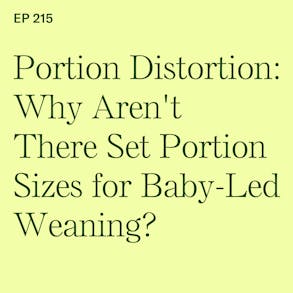
LISTEN TO THIS EPISODE
Episode Description
What portion sizes should I be offering my baby when starting solids? Reality is that there is no clear or definitive guideline to what an exact portion size of food should look like for a baby. In this episode I will share some ideas of how much a baby might eat but also share some tips about things you can do to help your baby learn how to eat. At the end of the day there are really no rules or guidelines for portion sizes during baby-led weaning.
Links from This Episode
- To shop for ezpz tools visit ezpzfun and use code BABYLED for 15% discount on your purchase
- Baby-Led Weaning with Katie Ferraro program with the 100 First Foods™ Daily Meal Plan, join here: https://babyledweaning.co/program
- Baby-Led Weaning for Beginners free online workshop with 100 First Foods™ list to all attendees, register here: https://babyledweaning.co/baby-led-weaning-for-beginners

Latest Episodes
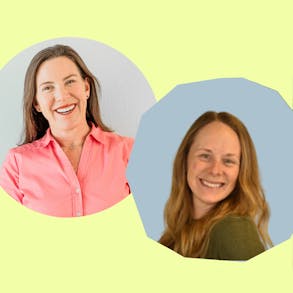
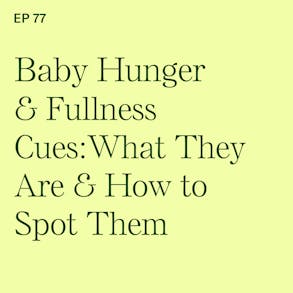
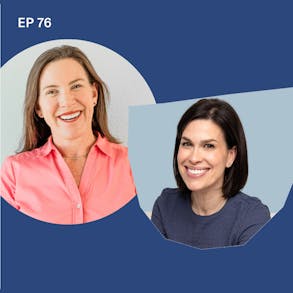
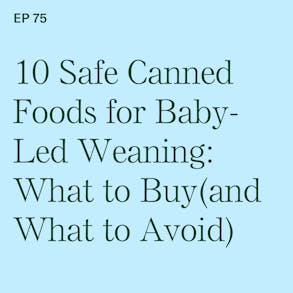

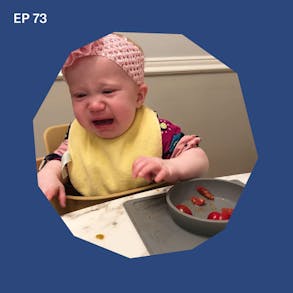
Katie Ferraro (0s):
We know that most babies who start solid foods with traditional spoonfeeding have only had 10, 15 different foods. By the time they turn one, if your baby has a hundred different foods under their belt, and then you lose 10 or 15 of those foods to picky eating your baby still has 85 or 90 foods that they can safely. Hey, there I'm Katie Ferraro, Registered Dietitian college nutrition professor and mom of seven specializing in baby-led weaning here on the baby-led weaning made easy podcast. I help you strip out all of the noise and nonsense about feeding, leaving you with the competence and knowledge you need to give your baby a safe start to solid foods using baby-led weaning.
Katie Ferraro (41s):
Hello and welcome back today's episode is about Portion Distortion and why aren't there set portion sizes for baby Led Weaning parents ask me all the time. Can you send me your portion guide for baby Led Weaning? And I say, no, not because I don't want to send it to them cause I don't have one because there are no hard and fast rules about how much food, a baby quote unquote should eat at a certain age or stage. And when you see other creators making BLW portion guides, a they're making it up and be all it does is set parents up for failure. When their baby doesn't eat the exact amount that they read about on a free guide or download that they got. So I usually start these mini baby-led weaning training episodes out with the tip of the day.
Katie Ferraro (1m 24s):
But today's tip is there's no such thing as set portion sizes for baby Led Weaning. We are going to chat a little bit about some surrounding issues around portion size, because I want to give you an idea of how much your, a baby might eat and share some tips about things you can do to help your baby learn how to eat. But I don't want you to feel bad if your baby's not eating one to two tablespoons of legumes and a half a cup of vegetables or to starchy foods at six months of age, because at the end of the day, there's no hard and fast rules about how much your baby should be eating. I also want to go through some of the portion guides. We can talk a little about the United States and our lack of a lot of stuff for babies in the six to 12 months of age.
Katie Ferraro (2m 7s):
Like a lot of the nutrition information has historically only been for 12 month old babies and on. So like, yeah, we know exclusive breastfeeding up until six months of age and then there's guidelines for 12 months and on. But what about six to 12 months of age babies? We do have some new dietary guidelines, what they call birth to 24 and I'll share some of those for the United States, but Edna on our team also did a deep dive and started looking at some of the portion recommendations in different countries. She's our podcast editor. And so I'm going to share some of that research cause I just think it's interesting to see what the recommendations are, but at the end of the day, I want you to know you're not doing anything wrong. If you don't know exactly how much your baby should be eating. So in the United States, if we look at the dietary guidelines for Americans from 2020 to 2025, this is a set of guidelines.
Katie Ferraro (2m 52s):
That, to be honest, nobody reads and every five years, nobody does the things that they recommend. So they've revised them and make some new recommendations. And they're generally not of interest to me as a baby led weaning expert and dietician, except for the last iteration of the DGAs super, super interesting because there's now birth to 12 months, birth to 24. There's some more guidelines than we've had in the past, but they're still really super vague. And that's a good thing because the vague messages are actually aligned with messages that we as feeding experts, teach, which a, there are no set portions for babies. And we want to ensure that babies are getting a nutrient dense, diverse diet from age six months on.
Katie Ferraro (3m 33s):
So that includes a variety of food sources from each food group. Now, if you're familiar with anything related to nutrition history, you know that in the United States, there's been a lot of changes over generations about how we teach portion sizes and food planning. Right? If you look back to 1992, we had the food guide pyramid, okay. And that gave way in 2005 to my pyramid, the food pyramid, but like for the digital age. And then that got scrapped a few years later for my plate, which I kind of love the plate. And I remember when my plate came out was during the Obama years. And I remember Michelle Obama saying, you know, she used to be an advocate for nutrition and then moved into being an advocate for physical activity.
Katie Ferraro (4m 14s):
But when she used to talk about food, she said, you know, this is an important improvement because people eat foods off of plates. They don't eat off of a pyramid. And there's all sorts of data showing that the food guide pyramid like most Americans could recognize what it is, but they knew nothing about how to actually make it implementable. And there's lots of data showing that the food guide pyramids don't work. Like I remember the data that would say, you know, most Americans can recognize what the food guide pyramid is, but can they take the information from it, which by the way, there wasn't that much information in it. And can they apply it to their own lives to make better food decisions? And the answer is no. So don't stress yourself out about visual food guides for babies, because we know actually that they don't even work for adults. However, you're the one picking the food for the baby and yes, work on a variety of foods.
Katie Ferraro (4m 57s):
So I teach a five step feeding framework in my hundred FIRST FOODS approach where we introduced five new foods per week. And those five foods are selected from five different food categories, fruits, vegetables, starchy foods, protein foods, and then the allergenic foods, because that's so important in infancy that we're introducing allergenic foods early and often. So if you follow that five-step feeding framework and you introduce a new fruit on Monday, a new vegetable on Tuesday, and you start G food on Wednesday, a protein food on Thursday in an allergenic food every Friday. And you do that every week after one week, your baby has five foods. After one month, your baby has 20 foods. After five months, your baby has a hundred foods. And there's this really, really amazing body of research that we're just starting to see evolve showing us the diet.
Katie Ferraro (5m 39s):
Diversity is everything, the greater, the variety of foods and flavors and tastes and textures that you can introduce to your babies early and often, the more it does to help you raise an independent eater. And it also helps reduce the severity and the likelihood of picky eating, just like there's no hard and fast portion guides for baby Led Weaning. There's also no way to prevent picky eating, but helping your baby achieve diet diversity. By offering this wide variety of foods can go a long way to help reduce the risk of picky eating. Now, if you dive deep into the dietary guidelines for Americans, the DGAs, you can find all of these patterns for toddlers aged 12 to 23 months. And it's all about not getting human milk or infant formula anymore, where you're getting most of your nutrition from food.
Katie Ferraro (6m 20s):
And we talk about that a lot on the podcast, right? The goal of baby Led Weaning is that by 12 months of age, your baby's getting most of their nutrition from food, but they don't wake up overnight and know how to eat a hundred different foods or how to eat five different foods a week. We have to be the ones introducing them to that variety. And if you look at traditional spoon-feeding, we know that most babies who start solid foods with traditional spoonfeeding have only had 10 or 15 different foods. By the time they turn one. And if you lose those 10 or 15 foods to picky eating in the second year of life, that becomes a very, very challenging child to feed. Those are the children with extreme picky eating who need to be in feeding therapy. But if your baby has a hundred different foods under their belt, by the time they turn one, and then you lose 10 or 15 of those foods to picky eating your baby's still has 85 or 90 foods that they can safely eat.
Katie Ferraro (7m 6s):
Right? So the key is to getting in a variety of foods during what we call the flavor window, that's important period where babies will like and accept a wide variety of food, but how much food should babies be eating? We don't know exactly how much. And so it's on us to trust our guts as parents and caregivers, for how much we think our babies might eat. I always say I don't do portion guides, but I will show you pictures and examples of how much you might expect a baby to eat, just so you can see around different ages and stages. So I do a lot of the visual training and teaching on Instagram at baby led weaning team and a tool that he use a lot is a suction mat called the mini mat from the company, EzPz So EzPz makes the original silicone suction mats.
Katie Ferraro (7m 48s):
I love them for baby Led Weaning and they have one called the mini-map and the mini is a three compartment suction mat. And it has two, two ounce portions. It's like a happy face. So the two eyes are two ounce portions and the mouth is a four ounce portion. I don't want you to go and start weighing foods or measuring foods because you care about how many ounces it is, but I'm just sharing that those are pretty small portions and we don't fill that whole portion pocket up with food. We usually fill it only about halfway full and lead a lot room around the edges for babies to get their fat little baby hands in there and move the food around and scoop and rake up the food into their mouth. Cause before they're, you know, when they're starting, they don't have their pincer grasp, right? So they can't use their forefinger and their thumb to pick up foods.
Katie Ferraro (8m 29s):
They use their whole hands. We need to leave a little room in there. So I like the mini mat for starting solid foods because it's a reminder a to keep the portions small and B to offer a variety of foods. So starting on day three of baby Led Weaning, I actually start using the mini mini-map and introduce baby to what looks like a meal. Now, of course they're not eating very much early on in baby Led Weaning, but let's say your typical meal is 20 minutes long. Most Babies can sit in the high chair for about 20 minutes. I'll use the first 10 minutes to introduce the new food of the day. So maybe I was working with today. For example, we had, quinoa made her a little quinoa fritter, cut that into strips about the size of my adult pinky finger. I'll put those strips in a bowl. I used the tiny bowl from EzPz, which is five ounces or the mini bowl from EzPz, which is eight ounces.
Katie Ferraro (9m 14s):
Those are both suction bowls. I don't put the strips in there and let the baby for 10 minutes. And then for the second part of the meal, the next 10 minutes, we'll actually swap in a mini-map that has two familiar foods on the previous days. So let's say we did parsnips yesterday, and we also have some maybe shredded pork that the babies tried. And in those small pockets, the two, two ounce portions, we'll do a little portion of parsnip from a previous day, a little portion of meat from a previous day. And then I'll put that quinoa fritter in the smiley face, which is the four ounce portion and let the baby try the meal. And that way we're trying one new food a day, baby gets to revisit the new food that they just tried, but you're also reintroducing familiar foods from the previous day.
Katie Ferraro (9m 54s):
There you go, small portions and a variety of foods. You're not measuring anything. You're not weighing anything. You're not getting your tablespoons out or your beakers and graduated cylinders. You're just offering a variety of foods, continuing to reintroduce familiar foods. So the baby will be familiarized with them and recognize them and learn how to eat them. And then also pushing forward by introducing new foods. If you're interested in checking out any of those EzPz products, I am an affiliate for EzPz they're at ezpzfun.com. My discount code KATIE10 works for 10% off everything atezpzfun.com. I love their tiny spoon. They're tiny cup, tiny bowl. All the tiny stuff is great for Baby-Led Weaning, but also that mini mat and the mini ball are really nice as well.
Katie Ferraro (10m 38s):
And what about other countries? We know in the United States, we've got a long history of not really helping parents out with regards to knowing a lot about how much babies should eat at six to 12 months of age. It's kind of like this transition period. I always think of it as like pre-season, my husband says to stop doing sports analogies, cause I'm terrible at them. But like, you know how the preseason is like I'm San Diego. We used to have a football team, the San Diego chargers. We had season tickets. When you buy the season tickets, you also have to get the preseason. You have to pay for them the full amount, but nobody wants to go to those games and it's not pretty to watch. It's kind of what, like baby-led weaning is it's pretty seasoned from six to 12 months of age, your baby's not ready to eat a hundred percent of their nutrition from food yet, but they're going to get there. It's the practice period.
Katie Ferraro (11m 18s):
So use baby led weaning as your season. Okay. And we don't know a ton about exactly how much babies need don't stress yourself out about it. We're gradually moving to a point where like when the season opens at 12 months of age, babies should be getting most of their nutrition from food and not so much of it from milk. Now, what do other countries do? Alright, let's look first at the United Kingdom, the national health service NHS for six-month-olds, they say, don't worry about how much a baby eats. The most important thing is getting them used to new tastes and textures, learning how to move solid foods around in their mouth and how to swallow them. At seven to nine months, the UK national health service says you're going to gradually move towards three meals a day and you should include a variety of foods.
Katie Ferraro (11m 59s):
And by 10 to 12 months of age, they say, baby should be having about three meals a day. Okay. So that's nice similar language to the United States, pretty vague, but again, no hard and fast guidance about the amounts because we really just don't know. And that's not the point. If you're focusing on how much your baby's eating during baby Led Weaning, you're focusing on the wrong thing. You've got to be focusing on letting baby learn how to eat. What about in Canada? They say birth to six months. Like everyone else, breast milk or formula six to 12 months, Canadian guidance start with foods that contain iron, offer them a few times a day, gradually increased the number of foods that babies eat today and offering your baby a range of nutritious foods from your family meals.
Katie Ferraro (12m 40s):
Love that language range, gradual iron, a few times, your family meals. Great advice. What about a Mexico birth to six months, same breast milk or formula. Okay. But the Mexican guidance definitely highlights the importance and benefits of breastfeeding, which we all understand, but there are certainly situations where we can't or for whatever reason don't want to breastfeed an infant formula and or breast milk is perfectly fine to meet baby's needs up until six months of age. But in Mexico, the recommendations are from six months on. This is kind of interesting cause they lumped six months to 24 months and we know the way a six month old baby eats is definitely not the same way that a 24 month old toddler eats. So I have a little bit of issue with guidance, like offer three meals and two snacks, dude, I'm sorry, but you have a six month old baby.
Katie Ferraro (13m 26s):
You do not have time to be doing three meals and two snacks plus they don't need it. Okay. We say one to two times a day at six months, as they're learning how to eat two to three times a day at eight, nine months, bump it up. And then by 10 months of age, if you can get to three times great, but don't stress yourself out about trying to do something. Your baby doesn't know how to do yet, which is eat solid food five times a day. Okay? You don't have to do that at six months of age. But I do like that. The Mexican guidance says offer at least one food from each food group. So they say fruits and vegetables, legumes, animal derived products, cereals. You're going to hit all the nutrients up. If you're trying to do foods from different groups, you're going to get different textures. You're going to get different tastes and flavors, which is important to take advantage of that flavor window.
Katie Ferraro (14m 11s):
But you also want to make a point to introduce those allergenic foods. And there's a lot of language in some of the different countries, guidance about nutrient dense foods. But I think a lot of them are missing the mark by not including, Hey, we need to be having the allergenic foods early and often because the research really shows us that that's what helps prevent food allergy. So just a little global tour. I know there's lots of other countries that I miss, but Edna, thank you for picking out some of this guidance from some different countries. None of them have set portions for baby Led Weaning. And if you've been looking for the magic BLW portion guide, please know it doesn't exist because we don't have any evidence to support exact numbers. Step away from focusing on how much your baby's eating, allow your baby at the time to learn how to eat.
Katie Ferraro (14m 54s):
And the goal will be eventually they'll be getting most of their nutrition from food. And if you continue to offer that variety of food, they won't have any nutrient gaps there'll be growing and thriving, and you're doing your part to reduce food allergies and to help prevent picky eating as well. Earlier, I mentioned my five step feeding framework. This is the outline that we use to introduce your baby to five new foods each week, right? It's a new fruit and vegetable and new starchy food, a new protein in a new allergenic food. Every week you do that for 20 weeks, boom, your baby's eaten a hundred foods before they turn one. You guys know we don't need to stress about or focus on the portion sizes. Cause there's no such thing as real portion sizes. But if you're looking for ideas of different types of foods that you can safely prepare for baby Led Weaning, and you want to get a copy of my hundred FIRST FOODS list, I do give it away to everyone on my weekly free training, which is called baby LED WEANING FOR BEGINNERS.
Katie Ferraro (15m 48s):
This is an online workshop. That's all about how to get your baby to eat 100 foods before returning one, without you having to spoonfeed purees or buy pouches. So you can sign up for this week's workshop times and grab your copy of the a hundred FIRST FOODS list by going to babyledweaning.co. And hopefully I'll see you on a workshop.
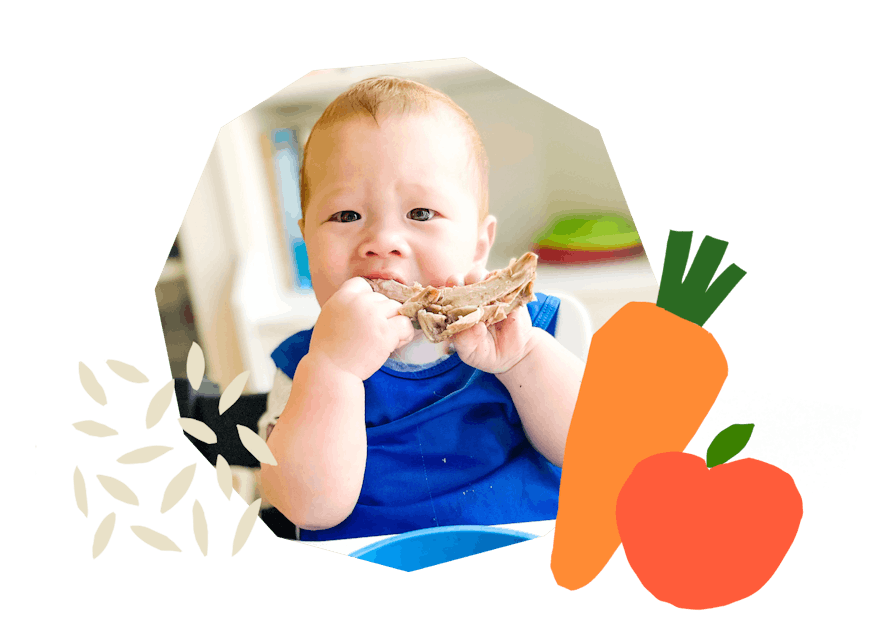
The Program Baby-Led Weaning with Katie Ferraro
A step-by-step digital program for starting solid foods safely and navigating the original 100 FIRST FOODS™ meal plan with baby-led weaning.
 EXPERT-LED, PROVEN APPROACH TO EATING REAL FOOD
EXPERT-LED, PROVEN APPROACH TO EATING REAL FOOD CONCISE VIDEO TRAININGS TO MASTER BABY-LED WEANING
CONCISE VIDEO TRAININGS TO MASTER BABY-LED WEANING 100 FIRST FOODS DAILY MEAL PLAN WITH FOOD PREP VIDEOS
100 FIRST FOODS DAILY MEAL PLAN WITH FOOD PREP VIDEOS
Baby-Led Weaning for Beginners Free Workshop
Is your baby ready to start solid foods, but you’re not sure where to start? Get ready to give your baby a solid foundation to a lifetime of loving real food…even if you’re feeling overwhelmed or confused about this next stage of infant feeding.
Get baby-led weaning recipes and tips delivered to your email inbox.


